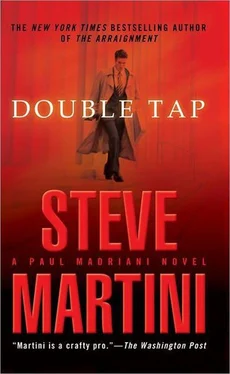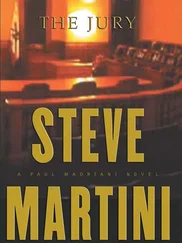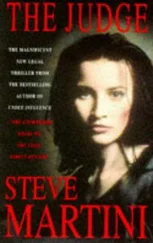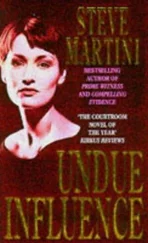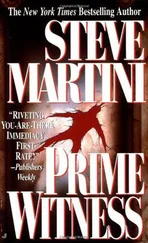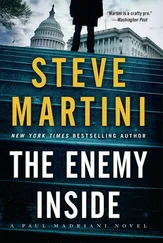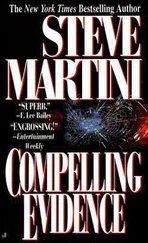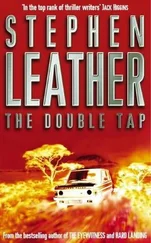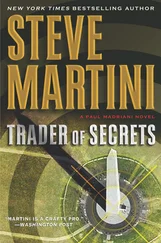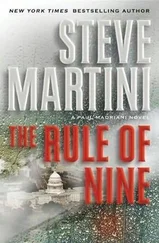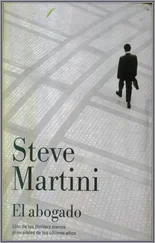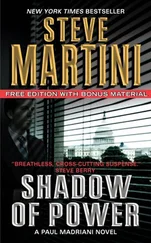Steve Martini - Double Tap
Здесь есть возможность читать онлайн «Steve Martini - Double Tap» весь текст электронной книги совершенно бесплатно (целиком полную версию без сокращений). В некоторых случаях можно слушать аудио, скачать через торрент в формате fb2 и присутствует краткое содержание. Год выпуска: 2014, ISBN: 2014, Издательство: Jove, Жанр: Триллер, на английском языке. Описание произведения, (предисловие) а так же отзывы посетителей доступны на портале библиотеки ЛибКат.
- Название:Double Tap
- Автор:
- Издательство:Jove
- Жанр:
- Год:2014
- ISBN:9781101550229
- Рейтинг книги:4 / 5. Голосов: 1
-
Избранное:Добавить в избранное
- Отзывы:
-
Ваша оценка:
- 80
- 1
- 2
- 3
- 4
- 5
Double Tap: краткое содержание, описание и аннотация
Предлагаем к чтению аннотацию, описание, краткое содержание или предисловие (зависит от того, что написал сам автор книги «Double Tap»). Если вы не нашли необходимую информацию о книге — напишите в комментариях, мы постараемся отыскать её.
Double Tap — читать онлайн бесплатно полную книгу (весь текст) целиком
Ниже представлен текст книги, разбитый по страницам. Система сохранения места последней прочитанной страницы, позволяет с удобством читать онлайн бесплатно книгу «Double Tap», без необходимости каждый раз заново искать на чём Вы остановились. Поставьте закладку, и сможете в любой момент перейти на страницу, на которой закончили чтение.
Интервал:
Закладка:
“Also the fact that the blood had a watery quality to it. You can see that here.” Rubin points again with the laser to one of the photographs. “This is indicative of the loss of the cerebrospinal fluid that cushions the brain against impact within the skull. It would indicate that the cerebral cavity of the skull has been compromised in a manner that would result in rapid and catastrophic loss of blood pressure to the brain. Even if the brain itself had not been damaged by gunshot wounds, this loss of blood and cerebral fluid would certainly lead to death within a very short period of time. Three, perhaps four minutes at most.”
“As a result of your initial examination of the body or your subsequent and more complete autopsy, were you able to determine the cause of death?”
“After I conducted a thorough postmortem examination, yes.”
“And what was that cause?”
“Madelyn Chapman died of gunshot wounds resulting in massive trauma to the brain involving both the frontal and parietal lobes. The wounds inflicted resulted in irreversible destruction to major portions of the brain necessary to support life-sustaining functions.”
“You say wounds: how many gunshot wounds are we talking about?”
“Two.”
“Two. You’re certain of that?” says Templeton.
“Yes.”
“And can you give us some idea how long would it have taken for the victim to die as a result of these wounds, in your opinion?” asks Templeton.
“Oh. That depends how you define death . If you’re talking brain-wave activity-what you might measure on an EEG, an electroencephalogram-I would say that death was virtually instantaneous. If you’re talking heart function, it could have taken anywhere from say two to four minutes. It’s hard to tell. As regards heart function, it would depend on how rapidly blood drained from the body and how long it took for the trauma to the brain to interrupt or curtail the electromuscular impulses, the autonomic nervous system that regulates the heart. The sympathetic and parasympathetic nervous systems.”
“Whoa!” Templeton has his hands up. “Let’s not get too technical, Doctor. Let’s keep it in the realm of the reasonable for those of us who flunked out of medical school and had to become lawyers.”
Jurors and members of the audience laugh-even Ruiz, until I step on his foot. It wouldn’t do for jurors who are laughing to see the defendant joining in, especially in light of the ghastly photos still up on the screen. As the chuckles subside I can hear Harry growling under his breath at the other end of our counsel table.
“Doctor, can you tell the jury what evidence you found during the course of your examination of the victim, both at the scene as well as during your postmortem autopsy, to substantiate your findings as to the cause of death?”
“Upon examination of the victim’s cranial cavity I discovered both a bullet and bullet fragments, all contained within the soft tissue of the victim’s brain.”
Any residual smiles quickly dissipate inside the jury box.
“As a result of your examination of the victim, were you able to determine whether there were wounds other than the two bullet wounds that you have already identified found on the victim’s body following death?”
“I was, and there were no wounds other than the two bullet wounds previously stated.”
“Other than the two bullet wounds to the victim’s head?”
“That’s correct.”
According to the witness, there were no gunpowder burns or stippling around the two wounds in question, eliminating the possibility of close-contact wounds with the muzzle of the pistol placed close to Chapman’s head. According to the witness, given the size of the firearm in question, the shots would have had to have been fired from at least eight to ten feet to avoid the discharge of hot powder and gases onto the victim’s hair and scalp. Also, the trajectory of the wounds would have been awkward for a close-in shot, as the weapon would have had to have been held above Chapman’s head.
Rubin makes these points as they bring in more pictures, this time from the autopsy. Again these have been carefully vetted by the courts to exclude shots that are likely to cause jurors to lose their breakfast. Included among the photographs are two macro shots, one of a clearly recognizable lead bullet and the other of shards and fragments, flattened pieces of a dark substance with irregular shapes and edges, all laid out on white cloth with a ruler across the bottom for scale.
“One of the bullets was largely intact,” says Rubin. “It was sheared on one side, probably when it struck bone, and was somewhat deformed. It would be my opinion that it mushroomed under impact with the victim’s head, both the bone of the skull and the soft tissue inside, as it radically reduced speed and lodged in the brain matter. The transfer of kinetic energy, the pressure caused by the entry of this bullet to the inner skull, caused a sizable portion of the skull at the posterior base of the victim’s head to be blown out.”
The graphic description by the witness, along with autopsy pictures offered up on the screen by Templeton’s master of the computer, has the desired effect. Templeton looks toward the jury box to make sure that they have absorbed all of the grisly detail.
“I found this bullet lodged just inside the cerebellum of the victim’s brain at the base of the neck.” The witness reaches around with his hand to the back of his neck as if to indicate location for the jury, and the judge describes this for the record.
“The other bullet was somewhat different, probably the second round that was fired. This bullet was of a different composition and it fragmented into multiple pieces inside the victim’s skull. This was found during my postmortem examination lodged in several places, all of them contained within the skull, and had to be debrided from the brain tissue.”
“In layman’s terms, Doctor?” Templeton wants him to define debrided .
“The bullet fragments had to be removed by scalpel and forceps from the brain tissue in which they had become lodged,” says the witness.
When I glance over at the jury, two of the women have their hands to their mouths, their gazes recoiling from the autopsy shots as Templeton’s tech causes the pictures to linger on the screen.
“Doctor, from your treatment of bullet wounds as well as from your experience as a medical examiner, are you familiar with what are called jacketed bullets?”
“I am.”
“Can you describe for the jury what a jacketed bullet is?”
“The term jacketed refers to a metal lining that coats the outside of a bullet. A jacketed round is usually either a total metal jacket-what is known as a TMJ-or a partial jacket of some kind. That is, the softer lead component of the bullet is either completely covered by a harder metal material or partially covered. Copper is a common material for bullet jackets.”
“Thank you. Now, during the course of your examination of the victim’s body, did you find any evidence that the two bullets that struck Madelyn Chapman had any kind of metal jacket?”
“I did not.”
“So the bullet fragments that you found were not part of a metal jacket that dislodged from either bullet in your opinion?”
“No, they were not.”
I look at Harry, who glances back with a quizzical stare. Neither of us can tell where he is headed. The pathology report indicated that the two bullets were unjacketed rounds but the significance of this is unclear.
“Did you weigh the two bullets in question? The largely intact bullet and the fragments of the other bullet?” Templeton asks.
“I did.”
“And what did you find their weights to be?”
Читать дальшеИнтервал:
Закладка:
Похожие книги на «Double Tap»
Представляем Вашему вниманию похожие книги на «Double Tap» списком для выбора. Мы отобрали схожую по названию и смыслу литературу в надежде предоставить читателям больше вариантов отыскать новые, интересные, ещё непрочитанные произведения.
Обсуждение, отзывы о книге «Double Tap» и просто собственные мнения читателей. Оставьте ваши комментарии, напишите, что Вы думаете о произведении, его смысле или главных героях. Укажите что конкретно понравилось, а что нет, и почему Вы так считаете.
